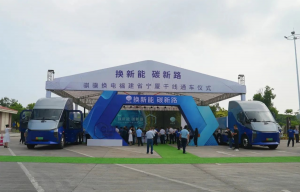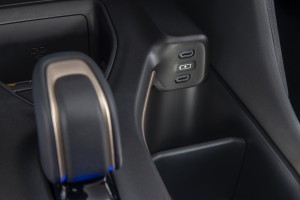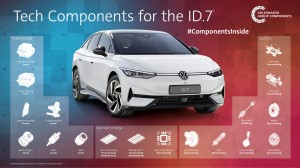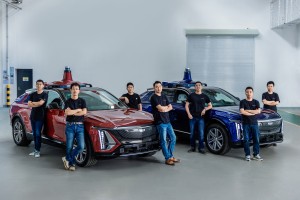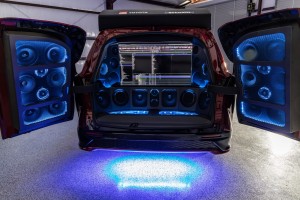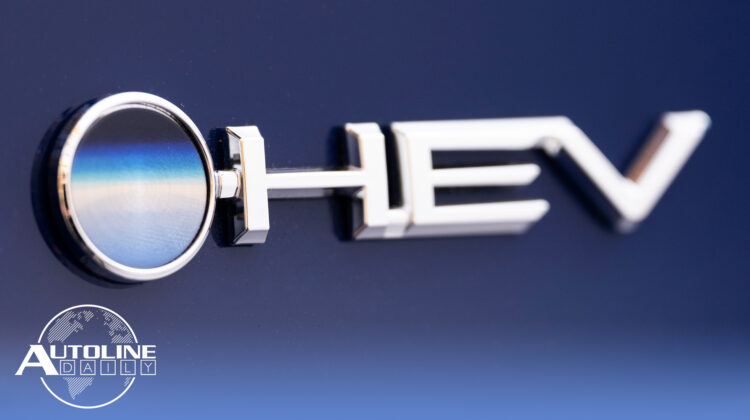
Listen to “AD #3634 – Hybrid Sales Expected to Triple; Ultium Battery Workers Getting Raises; GM Testing L4 AVs in China” on Spreaker.
Follow us on social media:
Runtime: 10:04
0:00 GM to Pay Ultium Workers $20+/Hour
1:30 China Takes Latin American Market by Storm
2:12 CATL Pioneers Battery Swapping for Semis
2:59 Battle of the USB Ports; A vs. C
4:15 VW ID.7 Starts at 57,000 Euros
5:13 EVs a Bonanza for Tool & Die Industry
6:10 U.S. Hybrid Sales to Triple
6:47 GM Testing L4 AVs in China
7:32 Toyota Creates DJ Booth on Wheels
Visit our sponsors to thank them for their support of Autoline Daily: Bridgestone, Intrepid Control Systems, Schaeffler and Teijin.
This is Autoline Daily, the show dedicated to enthusiasts of the global automotive industry.
GM TO PAY ULTIUM WORKERS +$20/HOUR
UAW president Shawn Fain has been hammering General Motors for paying only $16.50 an hour to new employees at its joint-venture Ultium battery plant in Lordstown, Ohio. GM said it couldn’t pay them more because it had to wait until the joint-venture and the UAW negotiated a contract. Well, that wasn’t working. Bloomberg reports that the JV is going to bump that pay to over $20 an hour, and give back pay to existing employees. That pay will likely go even higher with a new UAW contract. This may give GM some negotiating leverage with the union. But the real reason it’s increasing their pay is that it’s almost impossible to hire people for factory jobs at only $16.50 an hour. McDonald’s and Wendy’s are paying that kind of money and offer more flexible work hours. Shawn Fain says turnover at the plant is terrible, and we believe it. Last year Ford converted half of its temps to full time workers because turnover was 50%, meaning half the people quit after working the job for just a few weeks. Ford found it was cheaper to make them full time and pay them more money rather than suffer through that kind of turnover.
CHINA TAKES LATIN AMERICAN MARKET BY STORM
Chinese automakers are taking the Latin American market by storm. ZoZo Go reports that China now exports more cars to Mexico than the United States does. Even more surprising is half of the cars that General Motors sells in Mexico are imported from China. In Chile, BYD just started importing electric double decker buses. And in Chile, Bolivia and Ecuador, Chinese automakers have more market share than Western automakers. ZoZo Go says American and European automakers seem to have no answer to China’s low cost manufacturing advantage.
CATL PIONEERS BATTERY SWAPPING FOR SEMIS
The jury is still out on battery swapping. In China, the government provides generous subsidies for battery swapping, but only a handful of EV automakers offer it. But here’s an application that makes a lot of sense. CATL and the Fujian Expressway Group are building four battery swapping stations for long-haul semi trucks. The stations will be on a 400 mile long section of the coastal highway that runs between Shanghai and Hong Kong. They can swap out batteries in only 6 minutes which is faster than it takes to fill up the tanks on a diesel semi. They hope this eliminates any anxiety over driving range or charging time for commercial operators.
BATTLE OF THE USB PORTS: A Vs. C
Automakers are putting the newest USB ports in their cars; that’s the smaller USB-C, which provides more power, transfers more data and has reversible cords. But customers still have a lot of devices that only use USB-A, those bigger rectangle ones that came into cars in 2006. But we’re seeing a bit of a mixed bag approach from automakers. All new models that come from BMW, Mercedes, Volkswagen and Toyota will come exclusively with USB-C ports. But others, like Ford, GM and Stellantis are offering both. So, USB-A is likely to stick around for a while longer, even though USB-C will eventually become the standard. So how about you? Do you want your car to offer both, or are you ready to just go with the C ports? (Pictured: USB-C ports in Toyota Crown)
VW LAUNCHES ID.7 IN EU
Sales of Volkswagen’s ID family of EVs have underperformed, but we’re about to see if upgrades to its MEB architecture are going to pay off. It’s now taking orders for the all-new ID.7 in Europe and announced a starting price for its Pro model of 57,000 euros or just over $61,500 at today’s exchange rate. The Pro Model comes with more standard features, like ADAS tech, AR head-up display, an all-new navigation system, keyless entry and 19-inch wheels. This means that we should also see cheaper models, which will include some of the MEB upgrades we were talking about, like an all-new in-house developed electric motor, better battery cooling, improved charging and a new smart HVAC system. What do you think? Will this be enough to help turn VW’s EV sales around?
EVs ARE TOOL & DIE BONANZA
Good news for tool and die companies in North America. According to a new study from Harbour Results and AutoForecast Solutions, automakers will significantly boost spending on tooling in the next few years to help support the introduction of new models. Tool and die companies have struggled the last three years but the study says tool spending will hit $7 billion in 2025, up from $5 billion last year. Automakers plan to introduce 130 new models between now and 2030 and they’ll convert or build 56 plants to produce those vehicles. But most of the tooling investment will still go towards internal combustion vehicles and the researchers are skeptical that automakers will hit their EV targets in the coming years because of high costs, a poor charging infrastructure and range anxiety.
U.S. HYBRID SALES TO TRIPLE
And along those lines, hybrid sales are expected to grow significantly in the U.S. in the next few years. According to S&P Global Mobility, hybrid sales will more than triple over the next five years, accounting for 24% of sales in 2028. But pure electrics are still expected to remain more popular and will account for 37% of sales by then. Automakers like Ford, Toyota and Stellantis are boosting hybrid production because there’s still a lot of consumers not ready to make the switch to pure electric.
GM TESTING L4 IN CHINA
General Motors just got permission to start testing Level 4 autonomous vehicles in Shanghai. It’s partnering with Chinese AV startup Momenta using Cadillac Lyriqs. They’ll operate the vehicles in a designated area in downtown Shanghai for one year and they’ll have a safety driver on board for the tests. Interestingly, this does not seem to be connected with GM Cruise, which is expanding operations in the US market. No doubt that’s because GM ran into the same issue that Tesla did. China is very sensitive about the data captured by on-board cameras, and insists that all of that data must remain in China.
TOYOTA CREATES DJ BOOTH ON WHEELS
It’s summer time, which means you’re more likely to see someone with their windows open or top down and favorite tunes on full blast. But we bet this Toyota has a better sound system than anything you’ve seen so far. It took a Sienna minivan and fitted it with a professional grade 60-speaker sound system, high-resolution video screen, and LED lighting to create what is basically a DJ booth on wheels. We’ll provide a link if you’d like to learn more, but we expect to hear tunes blasting from this thing at upcoming auto shows and events.
Be sure to join us for Autoline After Hours this afternoon. Paul Eichenberg, one of our favorite automotive experts and Hanna Lutz from the Detroit News will be on the show. And they’ll join John and Gary to dig into some hottest topics in the industry right now, from autonomy to electrics to the confrontational negotiations with the UAW.
But that brings us to the end of today’s show. Thanks for tuning in.
Thanks to our partner for embedding Autoline Daily on its website: WardsAuto.com
Seamus and Sean McElroy cover the latest news in the automotive industry for Autoline Daily.




